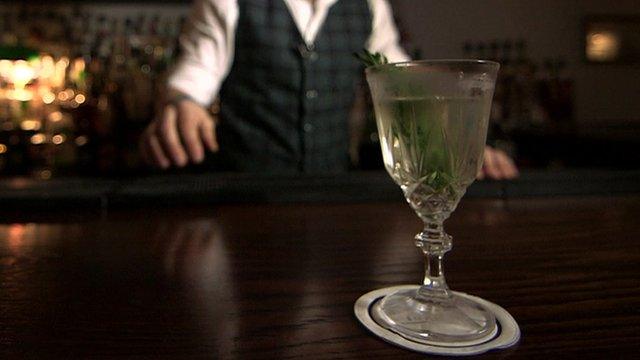Why is gin and tonic getting pricier?
- Published
How to make a posh gin and tonic
Whether it's the inflated entry price of a club or the double fare in the taxi home, New Year's Eve can be an expensive night. And it turns out the drinks are getting pricier too - particularly the gin and tonic.
Data released to BBC News shows the price of the average bottle of gin has risen by about a quarter in the past five years, with the accompanying tonic water also rising.
According to prices held by MySupermarket, spirits including whisky, rum and vodka are all more expensive than they were five years ago, but it is gin that has risen the most.
A 700ml bottle of gin costs an average of £23.06, compared with £18.91 five years ago. Its most common mixer, tonic water, is also up 18% over the same period.
Experts say the growth in the popularity of gin, which has seen a rise in the number of distilleries and brands on the market, is driving the growth in price.
However, they say people are also drinking less but "drinking better" and are prepared to go for quality over quantity.
Despite its popularity and reports of queues outside supermarkets earlier in the year, prosecco is slightly cheaper on average than in 2016, and only a little more expensive than it was in 2012.
The Spanish sparkling wine cava is one of few drinks to have got a little cheaper as well in the past year, while champagne has risen 10%.
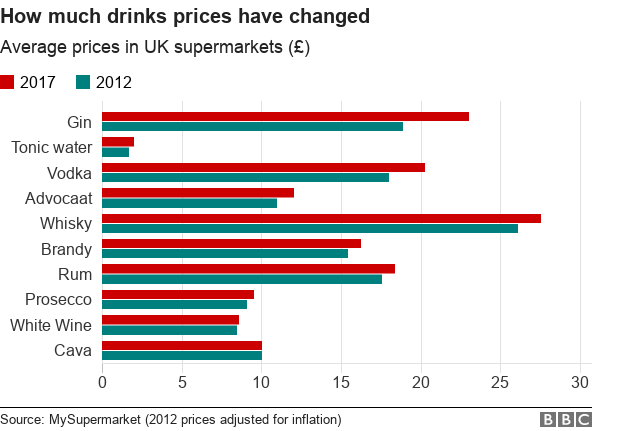
Why is gin getting more expensive?
A total of 96 new distilleries opened in the UK in 2015 and 2016, according to HMRC, taking the total to 273, more than double 2012's 128.
Instead of this increased supply sending the price of gin downwards, the opposite has happened.
The rise in the price of gin is down to a combination of people's changing tastes and "better marketing", according to one distiller.
James Chase of the Herefordshire-based Chase Distillery said people were becoming more "discerning".
"Over the last few years we've seen people drinking less, but drinking better," he says.
"You can see people taking more of an interest in what they eat and drink, to the extent that we have seen a huge increase in distillery tours."
Prices of botanicals - key ingredients in gin - have risen due to currency and exchange rates as well as growth in demand, he adds.
"However, for most the cost of production is still what it was five years ago," Mr Chase says. "There's just more marketing nous which means some are putting the price up."
Distillers are also bringing new and different varieties on to the market.
These more expensive gins, which can cost about £35 a bottle, push up the price of the "average" bottle on the supermarket shelves.

What are botanicals?

Juniper berries are the most common ingredient in gin and give the drink its note of pine
Botanicals are the berries, fruits, seeds, herbs and roots that give gin its flavour.
Juniper berries are the most common.
Coriander is another key ingredient as is the angelica root.
Then there are gins flavoured with cucumber, pink grapefruit and sloe berries.

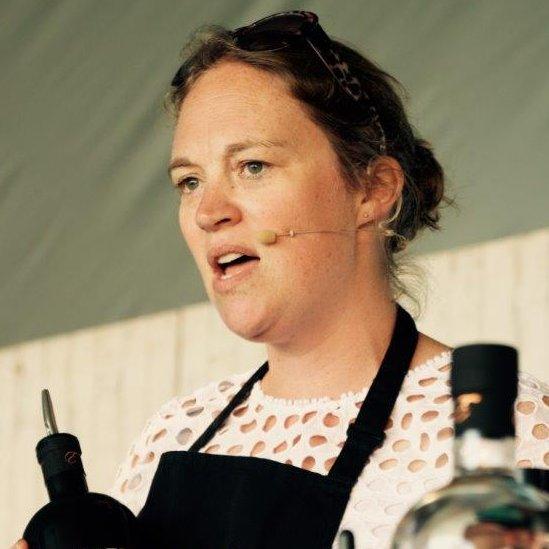
Vhari Russell says people are experimenting with different flavours
"There are a lot of artisanal gins around the £35 mark," says Vhari Russell of the Food Marketing Expert. "There are different flavours, from cucumber to rhubarb, which people are trying out in cocktail bars.
"Things have moved on a long way from the basic gin with tonic, ice and a slice."
Matt Sharp, who runs The Gin Vault in Birmingham, agrees. The bar opened in mid-2016 with 28 different types of gin. Now it stocks 220 varieties.
"My biggest seller is rhubarb gin with ginger ale," he says.
"Gin's never gone out of fashion, but it has become very popular more recently.
"People are trying peppery gins, with a bit of spice. We'll add a slice of orange, a little bit of honey and some chilli flakes. It's fantastic."
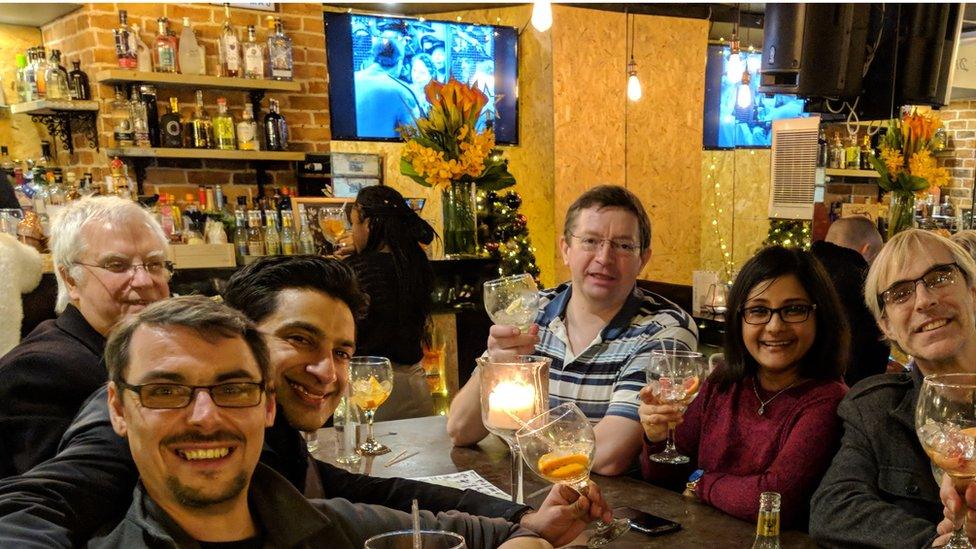
Damian Danieluk, bottom left, and friends thinks gin's versatility offers people the chance to experiment
Customer Colin Reeder, enjoying an after-work drink with colleagues, says: "When I started drinking gin it was the martini with the olive. Very James Bond.
"It was either that or you'd have it with orange or pineapple, which was disgusting. It's come back into fashion but I've no idea why. It's like LPs and vinyl, they're all coming back again."
His colleague Nivedita Bandit, on secondment with the team from Mumbai, adds: "I don't know why it became so popular."
Damian Danieluk has a theory. He believes gin offers more opportunities to experiment with flavours than many other spirits.
"It's very versatile", says the the 37-year-old, who works in manufacturing automation sales. "You can infuse it with so many different flavours."
The Wine and Spirits Trade Association says there is "no sign" of the British public tiring of new gins.
Bar manager Matt adds: "It won't slow down for a good few years yet.
"If anything it is just going to get bigger and bigger."
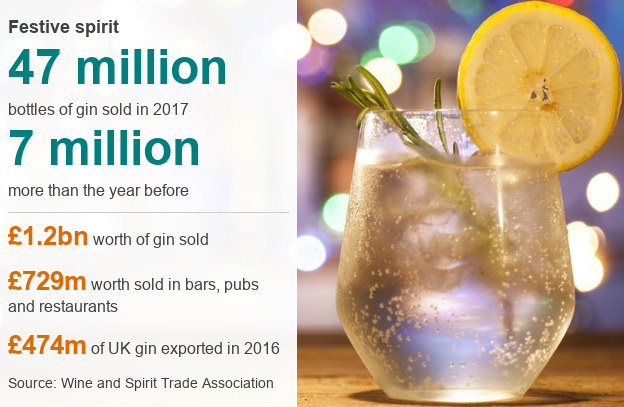
Price data from MySupermarket included averages for Tesco, Sainsbury's Morrisons, Asda and Waitrose.
- Published29 December 2017

- Published3 January 2015
